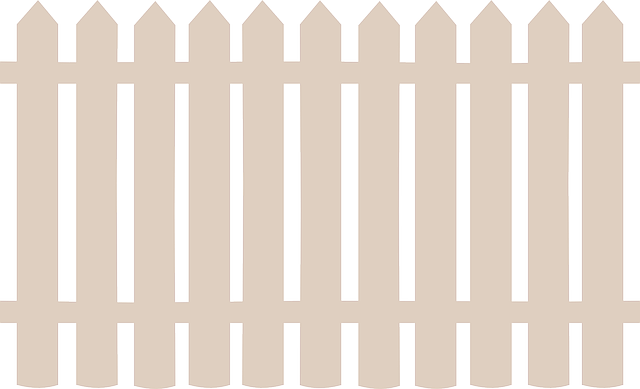Fences serve as both structural elements and design accents in outdoor spaces, and proper maintenance is key to preserving their beauty and longevity. This article guides you through the process of fence staining and sealing, crucial steps in enhancing the aesthetic appeal and protecting your wooden fences. From understanding the benefits of staining to selecting the ideal products, mastering application techniques, and the importance of a protective seal, you’ll discover everything needed for a professional-looking transformation.
- Understanding Fence Staining Benefits
- Choosing the Right Stain for Your Fence
- Application Techniques for Optimal Results
- Sealing: The Final Protective Layer
Understanding Fence Staining Benefits
Fence staining and sealing are essential steps to maintain the beauty and longevity of your wooden fence. By understanding the benefits of this process, homeowners can make informed decisions about protecting their investment. One of the primary advantages is enhanced aesthetics; a fresh coat of stain not only restores but also deepens the wood’s natural color, making it look vibrant and new again. Additionally, staining provides a protective layer against the elements, preventing rot, peeling, and other damage caused by sunlight, moisture, and extreme temperatures.
Regular sealing further fortifies the fence against these environmental factors, extending its lifespan significantly. Sealed wood is less prone to warping, splitting, or cracking, ensuring your fence remains structurally sound for years to come. This process also allows for easier cleaning and maintenance in the long term, as stained and sealed wood is less susceptible to dirt, grime, and mold buildup.
Choosing the Right Stain for Your Fence
Choosing the right stain for your wooden fence is a crucial step in maintaining its beauty and longevity. The first consideration is understanding the type of wood on your fence, as different woods have varying natural oils and porosity levels, which affect how stains absorb. Softwoods like cedar and pine require specific stains that enhance their natural reddish-brown tones while protecting against rot, while hardwoods such as oak or maple may need a stain that offers greater opacity to cover existing colors and provide more robust protection.
Additionally, think about the desired finish and level of protection. Water-based stains are popular for their low odor and quick drying time, but they offer less durability than oil-based stains, which penetrate deeper into the wood. Solid color stains provide maximum coverage and hide existing grain patterns, while transparent or semi-transparent stains allow some of the wood’s natural character to show through while still offering protection.
Application Techniques for Optimal Results
For optimal fence staining and sealing results, understanding application techniques is key. Begin by preparing the wood surface thoroughly—scrape off any loose or peeling paint, dirt, or debris. This ensures the stain adheres evenly. Next, choose a suitable brush or roller with the right nap (the length of the pile) for your project; finer naps are ideal for detailing, while coarser ones work better for large, even surfaces.
Apply the stain in thin, even coats, allowing each coat to dry completely before adding another. This technique prevents lap marks and ensures consistent coloration. When sealing, opt for a high-quality, water-based sealer that provides UV protection. Apply in similar thin layers, following the manufacturer’s instructions for drying times. Consistent, deliberate strokes will result in a professional finish that protects your fence from the elements while enhancing its aesthetic appeal.
Sealing: The Final Protective Layer
Sealing is the final step in fence staining and maintenance, serving as a protective layer against the elements. It creates a barrier that prevents water, UV rays, and other environmental factors from penetrating the wood, which can cause rot, warping, and fading. Choose a high-quality sealant designed for outdoor use to ensure maximum protection.
Applying a sealant after staining allows you to lock in the color and preserve the wood’s appearance over time. Regular sealing, typically every 1-3 years depending on exposure, will keep your fence looking new, extending its lifespan, and maintaining its aesthetic appeal.
